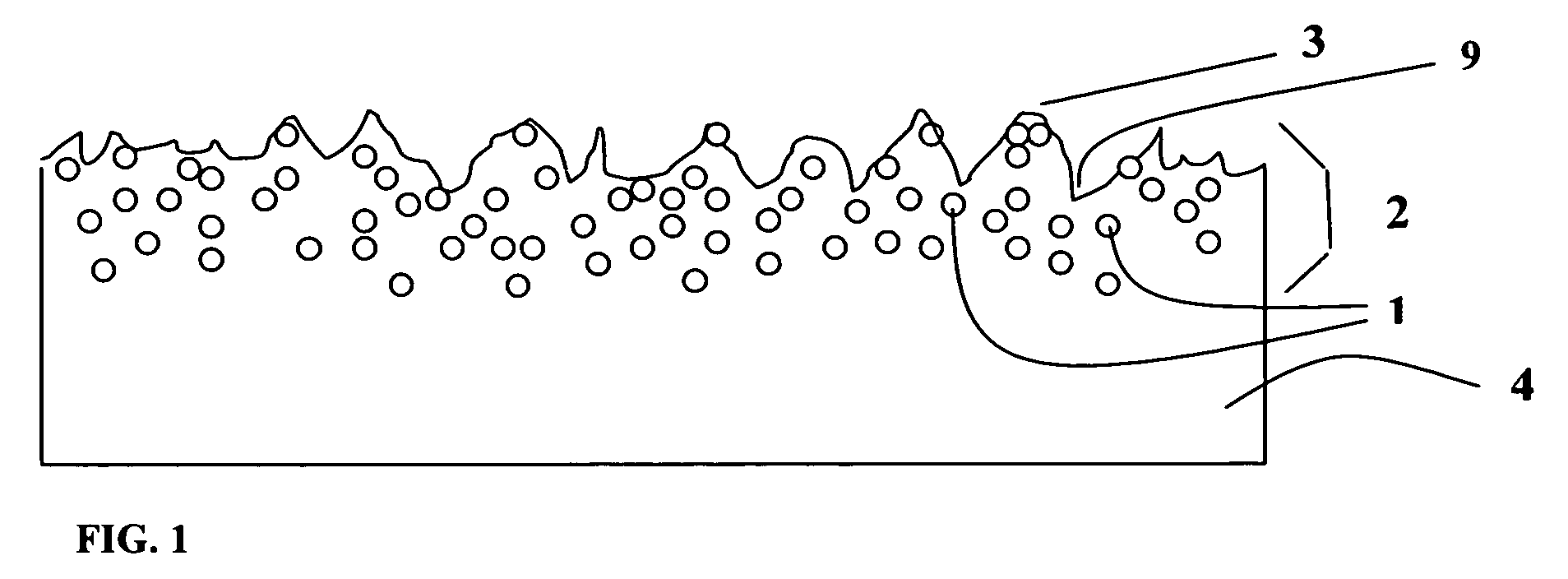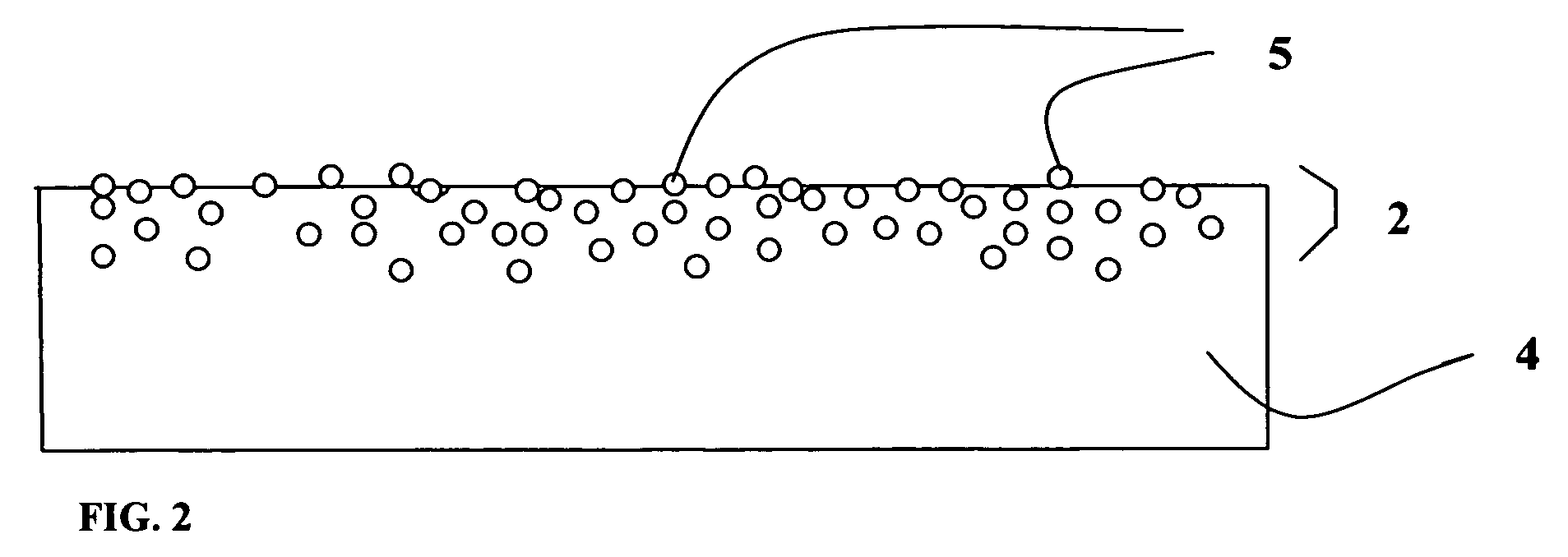Superfinishing of high density carbides
a carbide and high density technology, applied in the direction of solid-state diffusion coating, manufacturing tools, coatings, etc., can solve the problems of premature wear and component failure, equipment failure, and the difficulty of conventional grinding, honing, lapping or other surface finishing techniques, etc., and achieve the effect of low flow ra
- Summary
- Abstract
- Description
- Claims
- Application Information
AI Technical Summary
Benefits of technology
Problems solved by technology
Method used
Image
Examples
example 1
[0037]Four SAE 4122 steel, high density carbide spur gears were finished as described in the table below using prior art compositions and techniques:
[0038]
ParameterSpecificationNotesMachine Type:10-ft3 Sweco vibratory bowlAmplitude (mm):5.0Lead Angle:60°Starting Surface Roughness1.0 RaμmFinal Surface Roughness1.5 RaμmMedia:FERROMIL ® Media # 9mixed sizes: 9 / 16″×¼″×⅞″ellipses, 1⅛″×⅜″ AT 25 anglecut triangles, ½″×½″ AT45 anglecut trianglesActive Chemistry:FERROMIL ® FML-53commercially available from REMChemicals, Inc.Concentration:10.0% by volumeFlow Rate:2.46 liter / hour0.25 liter / hour / 1.0 ft3 of bowlvolumeProcessing Time (hours)2.0Burnish Chemistry:FERROMIL ® FBC-50commercially available from REMChemicals, Inc.Concentration:1.0% by volumeFlow Rate:90 liter / hourProcessing Time (hours)1.0 hour
[0039]In this example, commercially available liquid products for chemically accelerated vibratory finishing (i.e. FERROMIL® FML-53 REM Chemicals, Inc.) is diluted 10 percent by volume in a flow t...
example 2
[0046]Three SAE 4122 steel, high density carbide spur gears, approximately 12.25 centimeters×13 centimeters, were superfinished in accordance with the teachings of the present invention as described in the table below:
[0047]
ParameterSpecificationNotesMachine Type:600 liter Vibrachimica vibratory bowlAmplitude (mm):4.0Lead Angle:60°Starting Surface Roughness1.0 RaμmFinal Surface Roughness0.16 RaμmMedia:FERROMIL ® Media # 9⅜ inch cylinder wedges(Tricycle)Active Chemistry:Novel ChemistryWater-98.95 w %Sodium acid pyrophosphate-0.14 w %Monosodium phosphate-0.24 w %Sodium tripolyphosphate-0.05 w %Citric acid-0.13 w / w %Trisodium citrate dehydrate-0.48 w %Chemax MAXHIB PT-10T-0.01 w %Concentration:Neat, 100%Flow Rate:5.9 liter / hour0.28 liter / hour / 1.0 ft3 of bowlvolumeProcessing Time (hours)6.0Burnish Chemistry:FERROMIL ® FBC-50commercially available from REMChemicals, Inc.Concentration:1.0% by volumeFlow Rate:180 liter / hourProcessing Time (hours)1.0 hour
[0048]The visible appearance of the ...
PUM
| Property | Measurement | Unit |
|---|---|---|
| roughness | aaaaa | aaaaa |
| roughness | aaaaa | aaaaa |
| Ra | aaaaa | aaaaa |
Abstract
Description
Claims
Application Information
 Login to View More
Login to View More - R&D
- Intellectual Property
- Life Sciences
- Materials
- Tech Scout
- Unparalleled Data Quality
- Higher Quality Content
- 60% Fewer Hallucinations
Browse by: Latest US Patents, China's latest patents, Technical Efficacy Thesaurus, Application Domain, Technology Topic, Popular Technical Reports.
© 2025 PatSnap. All rights reserved.Legal|Privacy policy|Modern Slavery Act Transparency Statement|Sitemap|About US| Contact US: help@patsnap.com



